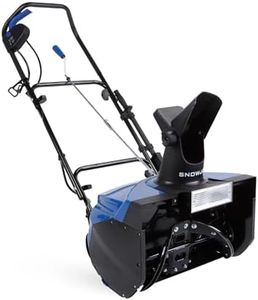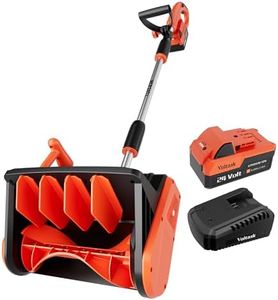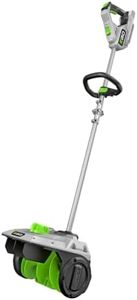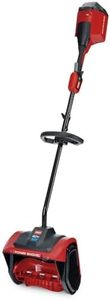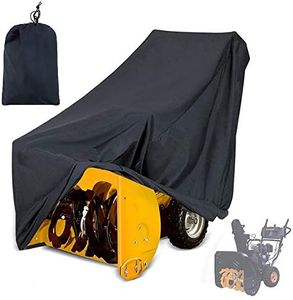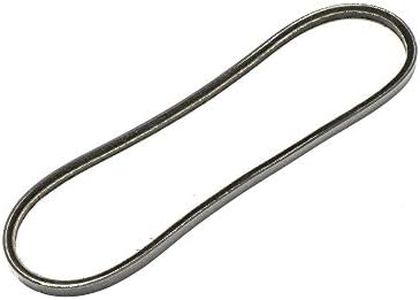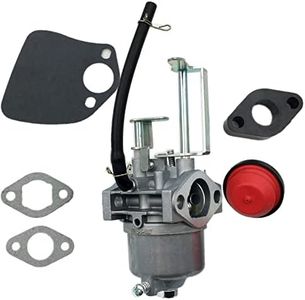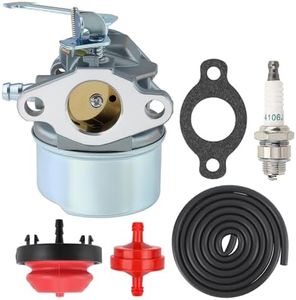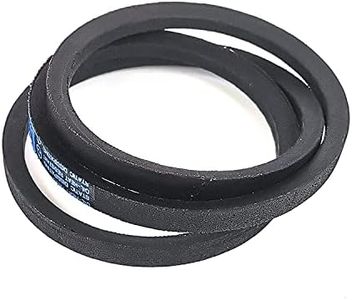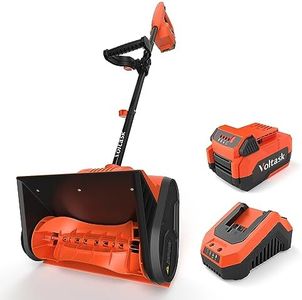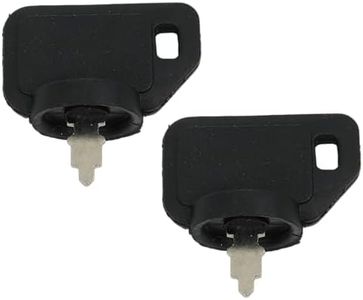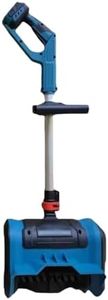We Use CookiesWe use cookies to enhance the security, performance,
functionality and for analytical and promotional activities. By continuing to browse this site you
are agreeing to our privacy policy
10 Best Electric Snow Blower
From leading brands and best sellers available on the web.Buying Guide for the Best Electric Snow Blower
Choosing the right electric snow blower can make winter chores much easier and safer. Rather than just grabbing the first model you see, it's important to think carefully about where you live, the size of the area you have to clear, and your own physical comfort. Electric snow blowers are quieter, lighter, and easier to maintain compared to gas models, but not all electric blowers are created equal. By understanding the key features and what they mean for your specific situation, you can confidently pick a snow blower that matches your needs and makes dealing with snow much less stressful.Power Source (Corded vs. Cordless)Electric snow blowers come in corded (plug-in) and cordless (battery-powered) versions. The power source affects how you use the blower: corded models can run as long as they are plugged in, but you need to manage the cord and stay near an outlet. Cordless snow blowers use batteries and give you more freedom to move around, although their runtime is limited by the battery charge. You should consider the size of the area you normally clear and whether you'll be able to easily manage a long cord, or if you need the flexibility of a cordless model for larger or more spread-out areas.
Clearing WidthClearing width measures how much snow the blower can clear in one pass, usually described in inches. Narrower widths (around 12-16 inches) are nimble and perfect for small walkways or tight spaces, while wider machines (18-22 inches or more) are suited for quickly clearing driveways or larger paths. If you have a small front step or porch, choose a narrower width for maneuverability. If you regularly clear a wide driveway, a larger width will save you time.
Intake HeightThe intake height determines how deep of a snow layer the blower can handle at once. Shorter intake heights (6-10 inches) are fine for regions that get light or moderate snowfalls, while taller intakes (12 inches or more) are better for handling deep snow after heavy storms. Think about the usual snowfall in your area: if big storms are rare, a lower intake will be lighter and easier to manage. If you need to deal with sizeable drifts, look for a higher intake.
Throw DistanceThis is how far the snow blower can throw the snow as it clears it. Longer throw distances (20-30 feet or beyond) help keep snow piles away from areas you’ve already cleared, especially on larger properties. Shorter throw distances are sometimes enough for walkways or smaller driveways. Match the throw distance to your property’s layout—if you need to keep snow well clear of walkways or driveways, look for higher numbers, but for confined urban spaces, a lower distance may be sufficient.
Weight and ManeuverabilityWeight affects how easy the snow blower is to handle, especially if you need to carry it up steps or turn it around tight corners. Lightweight models are easy for most people to push, lift, and store, while heavier units may offer more power but can be tiring to use. Consider your physical strength and the layout of your space—if you have steps, slopes, or limited space, opt for something lighter and more portable.
Auger TypeThe auger is the part of the blower that scoops up and throws the snow. Most smaller electric snow blowers have single-stage augers that are ideal for light to moderate snow on paved surfaces. Some larger or more advanced models have two-stage augers that can handle heavier, wetter snow and uneven surfaces. If you typically clear fluffy, light snow or smooth paths, a single-stage auger should suffice. For tougher jobs or mixed surfaces, consider a model with a more robust auger system.
